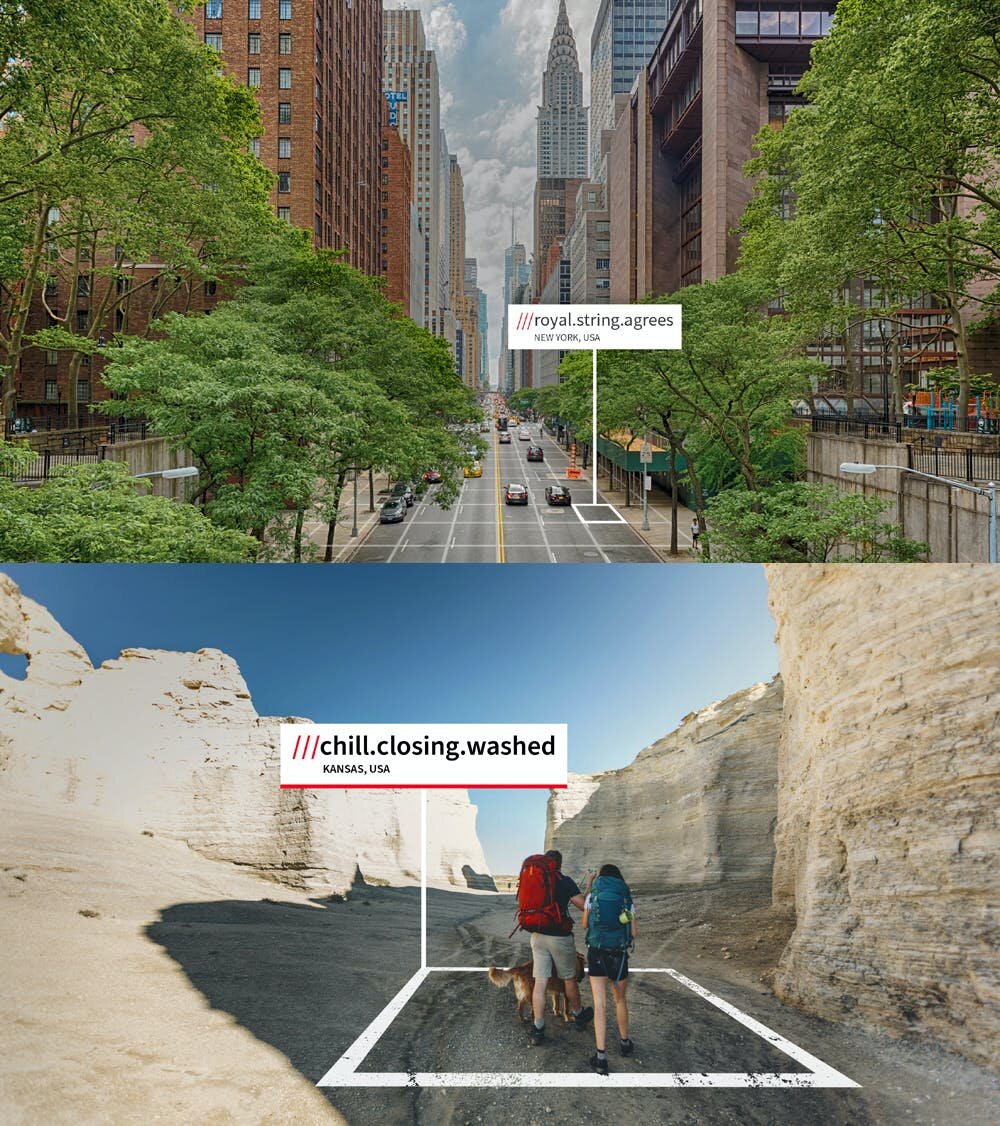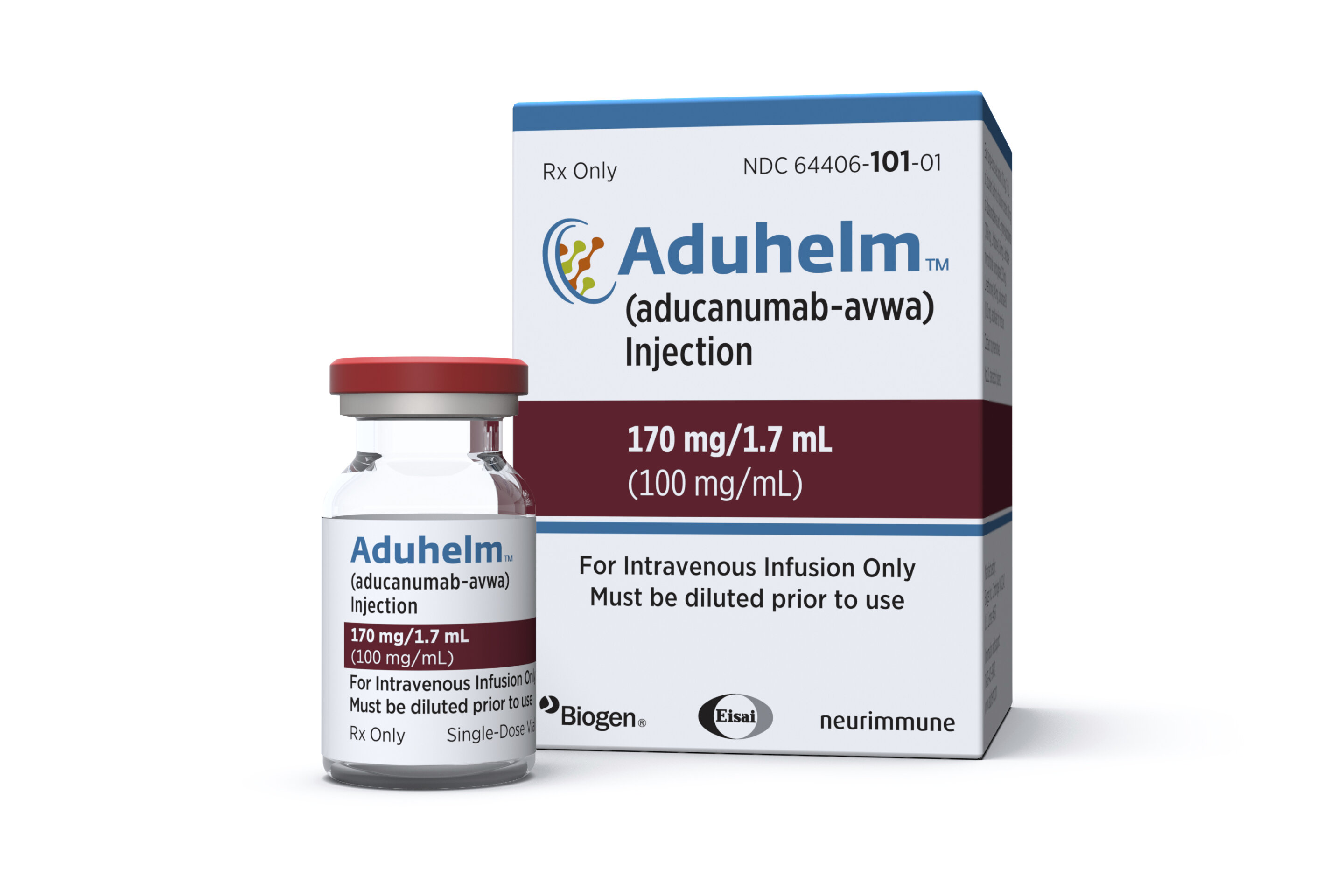#Scientists develop indoor-active photocatalyst for antiviral coating against various COVID variants
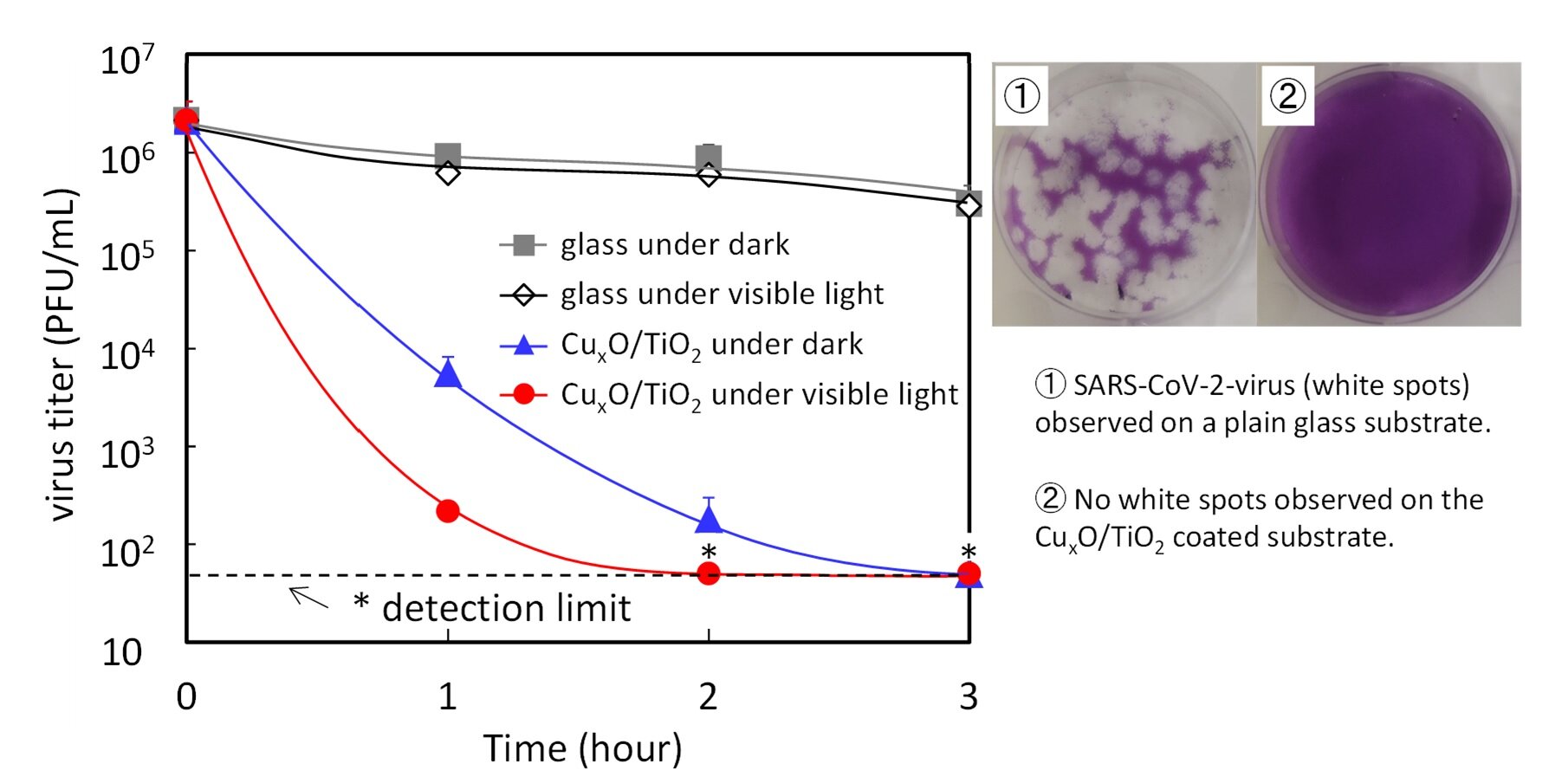
Table of Contents
“Scientists develop indoor-active photocatalyst for antiviral coating against various COVID variants”

A photocatalyst made using a combination of titanium dioxide (TiO2) and copper oxide (CuxO) nanoclusters inactivates various variant types of novel coronavirus SARS-CoV-2. In a recent breakthrough, scientists in Nara Medical University, Kanagawa Institute of Industrial Science and Technology, and Tokyo Institute of Technology have developed this antiviral photocatalyst, which has been proven to be effective under both darkness and indoor light.
The novel coronavirus (SARS-CoV-2), responsible for the ongoing COVID-19 pandemic, has affected millions of people worldwide. The main transmission pathway of the virus is through droplets released by infected people into the air. Additionally, these droplets exist on various surfaces as well. Viral infections mainly occur in indoor environments where many people gather. Antiviral chemicals, such as alcohol and hydrogen peroxide, are often used to decontaminate regularly touched surfaces. These chemicals essentially render the virus inactive by breaking down its proteins. However, these chemicals are volatile in nature, and therefore evaporate away. As a result, the disinfection process has to be carried out regularly.
Now in a study published in Scientific Reports, a research team of Nara Medical University, Kanagawa Institute of Industrial Science and Technology, and Tokyo Institute of Technology has developed a solid-state photocatalyst as an alternative defense against the virus. Unlike chemical disinfectants, solid-state coatings remain for a long time, and since the viral outbreak, have been the subject of intensive research around the world. Solid-state antiviral coatings have the advantage of being non-toxic, abundant, and chemically and thermally stable.
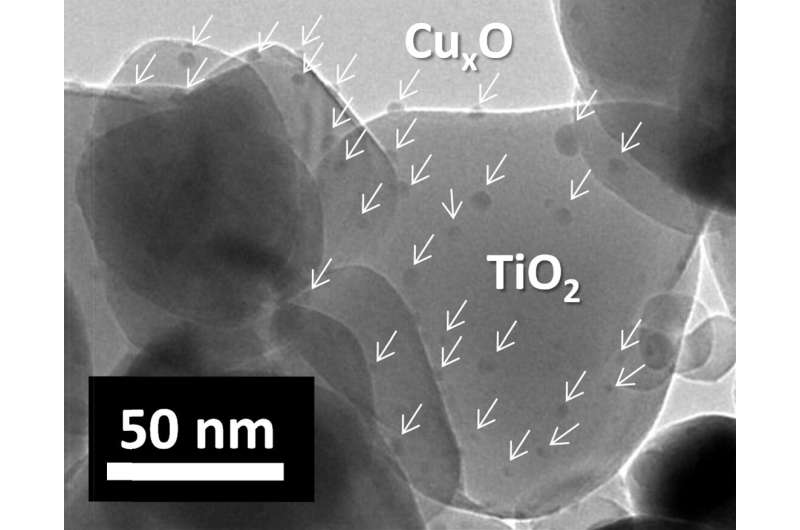
Many of these solid-state coatings use TiO2 photocatalysts, that when exposed to ultraviolet (UV) light, cause oxidation reaction that can destroy organic matter like the spike proteins found on the surfaces of coronaviruses. However, these coatings are activated only when exposed to UV light, which is not present in typical indoor environments. In most indoor environments, lighting is usually turned off at night; thus antiviral material that functions under dark conditions is desired.
To get the coating to work under visible light as well dark conditions, the team developed a composite consisting of TiO2 and CuxO nanoclusters. CuxO nanoclusters are composed of a mixed valence number oxide, in which Cu(I) and Cu(II) species are present. The Cu(II) species in CuxO contributes to the visible-light-driven photocatalysis reaction, whereas the Cu(I) species plays a crucial role in denaturing virus proteins, thereby causing their inactivation under dark conditions.
By coating the CuxO/TiO2 powder on a glass, the team showed that it could inactivate even the highly virulent Delta variant of SARS-CoV-2. The team has also confirmed the inactivation of Alpha, Beta, and Gamma variants by CuxO/TiO2 in addition to the wild type strain.
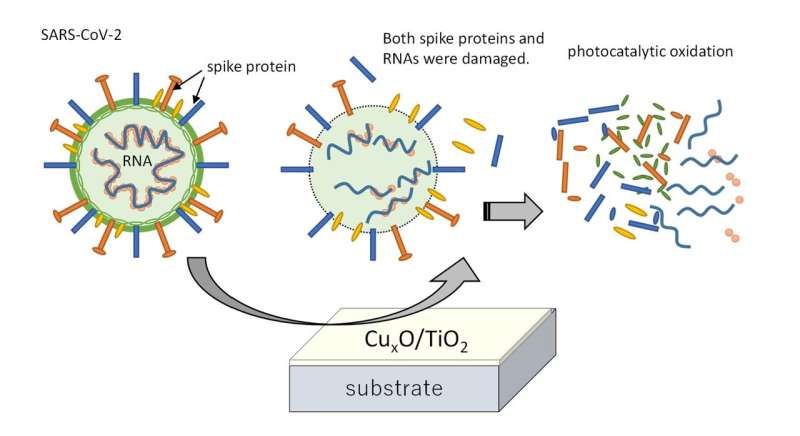
The team carefully investigated the antiviral mechanism using sodium dodecyl sulfate-polyacrylamide gel electrophoresis (SDS-PAGE), ELISA assay, and RT-qPCR analysis. These analyses strongly suggest that the Cu(I) species in CuxO denaturalizes spike proteins and also causes RNA fragmentation of SARS-CoV-2, even under dark conditions. Furthermore, white light irradiation causes the photocatalytic oxidation of the organic molecules of SARS-CoV-2. Based on this antiviral mechanism, the present antiviral material is not limited to a specific variant of the virus and will be effective to inactivate various types of a potential mutant strain.
White light illumination in the present study is usually used as an indoor light apparatus. This can make the CuxO/TiO2 photocatalyst very effective in reducing the risk of COVID-19 infection in indoor environments, which are usually subjected to both light and darkness periodically.
Coating surfaces with a thin layer of copper has the potential to kill the virus causing COVID-19 faster
Inactivation of Various Variant Types of SARS-CoV-2 by Indoor-light-sensitive TiO2-based Photocatalyst, Scientific Reports (2022). DOI: 10.1038/s41598-022-09402-7
Citation:
Scientists develop indoor-active photocatalyst for antiviral coating against various COVID variants (2022, April 14)
retrieved 14 April 2022
from https://phys.org/news/2022-04-scientists-indoor-active-photocatalyst-antiviral-coating.html
This document is subject to copyright. Apart from any fair dealing for the purpose of private study or research, no
part may be reproduced without the written permission. The content is provided for information purposes only.
If you liked the article, do not forget to share it with your friends. Follow us on Google News too, click on the star and choose us from your favorites.
For forums sites go to Forum.BuradaBiliyorum.Com
If you want to read more Like this articles, you can visit our Science category.
